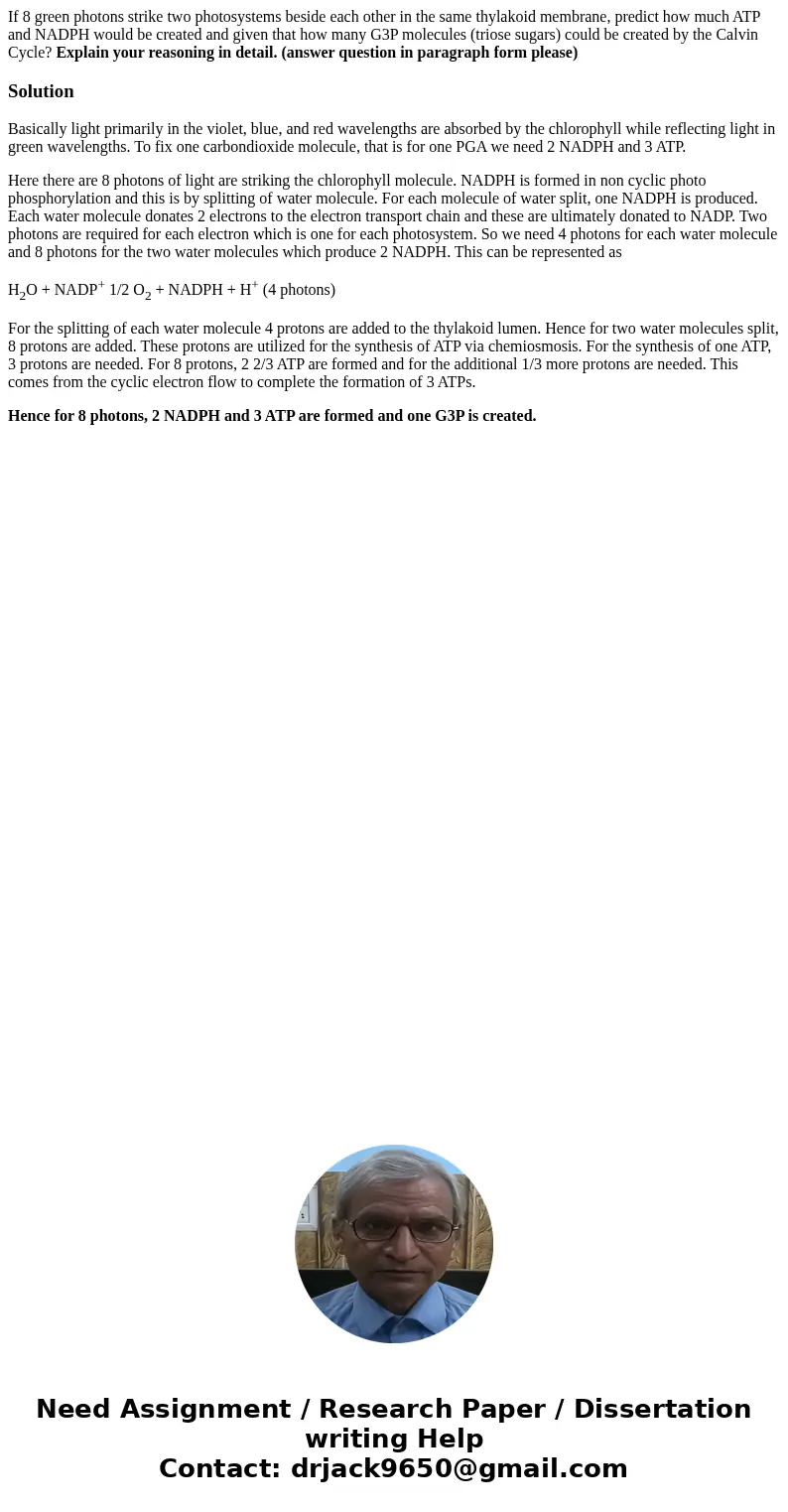If 8 green photons strike two photosystems beside each other
If 8 green photons strike two photosystems beside each other in the same thylakoid membrane, predict how much ATP and NADPH would be created and given that how many G3P molecules (triose sugars) could be created by the Calvin Cycle? Explain your reasoning in detail. (answer question in paragraph form please)
Solution
Basically light primarily in the violet, blue, and red wavelengths are absorbed by the chlorophyll while reflecting light in green wavelengths. To fix one carbondioxide molecule, that is for one PGA we need 2 NADPH and 3 ATP.
Here there are 8 photons of light are striking the chlorophyll molecule. NADPH is formed in non cyclic photo phosphorylation and this is by splitting of water molecule. For each molecule of water split, one NADPH is produced. Each water molecule donates 2 electrons to the electron transport chain and these are ultimately donated to NADP. Two photons are required for each electron which is one for each photosystem. So we need 4 photons for each water molecule and 8 photons for the two water molecules which produce 2 NADPH. This can be represented as
H2O + NADP+ 1/2 O2 + NADPH + H+ (4 photons)
For the splitting of each water molecule 4 protons are added to the thylakoid lumen. Hence for two water molecules split, 8 protons are added. These protons are utilized for the synthesis of ATP via chemiosmosis. For the synthesis of one ATP, 3 protons are needed. For 8 protons, 2 2/3 ATP are formed and for the additional 1/3 more protons are needed. This comes from the cyclic electron flow to complete the formation of 3 ATPs.
Hence for 8 photons, 2 NADPH and 3 ATP are formed and one G3P is created.

 Homework Sourse
Homework Sourse